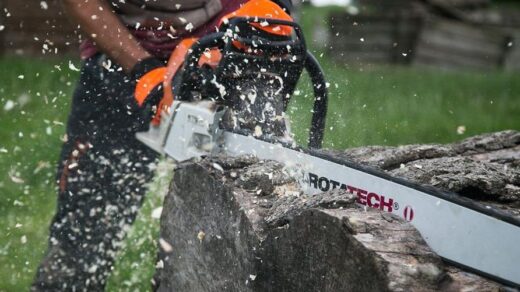The FST-7 workout, short for Fascia Stretch Training 7, is a muscle-building technique that has gained significant popularity in bodybuilding and fitness circles. Developed by renowned trainer Hany Rambod, this method focuses on stretching the fascia, a connective tissue surrounding the muscles, to promote growth. Rambod’s technique involves combining intense muscle contractions with specific stretching methods, particularly in the last set of each exercise.
The “7” in FST-7 refers to the seven sets performed in the final exercise of a particular muscle group, with minimal rest between sets. This unique combination of stretching and pumping blood into the muscles results in an increased muscle size and overall muscle density over time.
How Does the FST-7 Workout Work?
The primary objective of the FST-7 workout is to create more room for muscle growth by stretching the fascia, thereby enhancing muscle hypertrophy. Fascia can be quite rigid and restrictive, limiting the expansion of the muscle. By strategically applying stretching techniques, the FST-7 method aims to overcome this limitation.
Here’s how the FST-7 system works in practice:
- Focus on the Pump: FST-7 encourages pumping blood into the targeted muscle group, making the muscle appear fuller. This expansion helps stretch the fascia tissue, which can lead to long-term muscle growth.
- Multiple Sets: The “7” in FST-7 refers to the 7 sets of an isolation exercise performed at the end of a workout for a specific muscle group. For example, when working on chest muscles, you might end with 7 sets of cable flyes.
- Short Rest Periods: Between these 7 sets, the rest period is minimized, typically 30–45 seconds. This helps maintain blood flow in the muscles.
- Incorporating Compound Exercises: Before the 7 sets, the workout typically includes heavier compound movements such as squats or bench presses to create an initial stimulus for growth.
The Science Behind Fascia Stretching
The fascia is a dense layer of connective tissue that wraps around muscles, providing structure and protection. While essential for function, the fascia can limit muscle expansion if it becomes too tight. The FST-7 method is based on the concept that by stretching the fascia with high-volume sets, one can increase the muscle’s room to grow.
FST-7 works by forcing an intense amount of blood into the muscle during the final sets of an exercise. This blood flow stretches the fascia, which over time can adapt and expand. With a more flexible fascia, muscles are able to grow larger and denser as there’s more space for them to develop.
Key Benefits of the FST-7 Workout
The FST-7 workout offers a unique approach to muscle building, with several benefits for those looking to enhance their physique:
1. Enhanced Muscle Growth
One of the primary benefits of the FST-7 workout is increased muscle growth. By stretching the fascia, you’re creating more room for muscle expansion, which can result in greater hypertrophy. The high volume of sets at the end of your workout forces an intense pump into the muscles, stretching them beyond their usual limits.
This process helps promote long-term gains as your muscles adapt to this new, expanded space. Over time, this technique may lead to a fuller, more defined muscular appearance.
2. Improved Muscle Density and Hardness
The FST-7 workout not only promotes muscle growth but also enhances muscle density and hardness. The repeated sets and limited rest periods ensure that your muscles are constantly engaged, which leads to better overall muscle development. As the fascia stretches, your muscles will appear more solid and defined.
This increased density is particularly beneficial for those who want a more sculpted and “hard” look, as opposed to just adding mass without definition.
3. Focus on Lagging Muscle Groups
FST-7 is an effective way to target and improve lagging muscle groups. Because it involves high-volume, intense exercises focusing on specific muscles, it’s ideal for addressing areas that may be underdeveloped or not responding as well to traditional training methods.
If you have muscle groups that aren’t growing as quickly as others, the FST-7 technique allows you to zero in on those areas with the 7-set approach, ensuring that they receive extra attention and stimulation.
4. Enhanced Muscle Pump
One of the key aspects of the FST-7 workout is its ability to deliver a powerful muscle pump. A pump is when the muscle fills with blood during exercise, giving it a fuller and larger appearance. The 7 sets at the end of a workout, with short rest periods, ensure that blood stays in the muscle for longer durations.
This pump is not just aesthetic; it plays a significant role in muscle growth by delivering essential nutrients to the muscles, speeding up recovery, and enhancing performance in future workouts.
5. Improved Mind-Muscle Connection
Since the FST-7 technique focuses on high-volume training with short rest periods, it encourages an improved mind-muscle connection. You have to concentrate on contracting the target muscle fully during each set, which enhances your ability to activate that muscle group effectively.
A stronger mind-muscle connection allows for better engagement of muscles during each workout, leading to greater muscle activation and better overall results.
How to Structure an FST-7 Workout
While the FST-7 technique can be applied to any muscle group, structuring the workout properly is essential for maximizing the benefits. Here’s a typical approach for incorporating FST-7 into your training routine:
Step 1: Start with Compound Movements
Start your workout with compound exercises that target multiple muscles. For example, if you’re training your chest, you could begin with bench presses or incline presses. These heavy, multi-joint movements provide the initial stimulus for muscle growth and prime your muscles for the high-volume work to come.
Step 2: Focus on Muscle-Specific Isolation Exercises
After completing your compound exercises, move on to isolation exercises that target the muscle you’re focusing on. For chest workouts, this might include dumbbell flyes or cable crossovers. Isolation exercises allow you to focus specifically on one muscle, ensuring that it gets fully worked.
Step 3: Perform the FST-7 Sets
At the end of the workout, perform the 7 sets of an isolation exercise, resting only 30–45 seconds between sets. Choose a weight that allows you to complete each set with proper form but is challenging enough that the last few reps are difficult to finish.
For example, if you’re working on your arms, your FST-7 sets could include cable curls or tricep pushdowns. Ensure that the targeted muscle is getting a full contraction and stretch with every rep.
Step 4: Proper Rest and Recovery
Given the intensity of the FST-7 workout, adequate rest and recovery are crucial. You shouldn’t train the same muscle group using FST-7 more than once a week to avoid overtraining. Ensure you’re getting plenty of sleep, maintaining a balanced diet rich in protein, and staying hydrated to support muscle recovery and growth.
Common Mistakes to Avoid with FST-7
While the FST-7 workout can produce impressive results, there are some common mistakes that people make when following this routine. Avoid these pitfalls to maximize your progress:
1. Skipping the Compound Movements
Some individuals may focus too heavily on the 7 sets at the end and neglect their compound exercises. Compound lifts like deadlifts, squats, and bench presses lay the foundation for muscle growth, and skipping them can hinder your progress.
2. Not Using Proper Form
With the high volume and short rest periods of the FST-7 method, it can be tempting to rush through sets without maintaining proper form. However, to fully stretch the fascia and stimulate muscle growth, proper form is essential. Ensure that every rep is performed with control and focus on the target muscle.
3. Overtraining
The FST-7 workout is intense, and overtraining is a real risk if you don’t allow enough time for recovery. Ensure that you’re giving your muscles the proper rest between sessions and avoid using FST-7 on the same muscle group more than once per week.
H2: Who Can Benefit from the FST-7 Workout?
The FST-7 workout is highly versatile and can be beneficial for a wide range of individuals. However, it’s particularly suited for:
- Bodybuilders looking to achieve maximum muscle hypertrophy.
- Athletes who want to enhance their muscle size and density.
- Experienced lifters who have hit a plateau in their training and need a new stimulus for growth.
- Fitness enthusiasts focusing on sculpting specific muscle groups that are lagging behind.
If you’re new to lifting, it may be best to build a strong foundation with basic training principles before jumping into an advanced technique like FST-7.
FAQ’s
1. Can Beginners Try FST-7?
While FST-7 is designed primarily for advanced lifters and bodybuilders, beginners can incorporate elements of the technique. However, it’s essential for newcomers to first build a solid foundation with basic strength training before tackling the intensity and volume of FST-7.
2. How Often Should You Perform FST-7?
Due to the intensity of the workout, FST-7 should only be performed on the same muscle group once per week. This ensures that muscles have enough time to recover and adapt to the heavy workload.
3. Do I Need Special Equipment for FST-7?
FST-7 can be performed with standard gym equipment. Most exercises involve traditional weights like dumbbells, barbells, or cables, making it accessible in any well-equipped gym.
4. Is FST-7 Suitable for Fat Loss?
FST-7 is primarily focused on muscle hypertrophy, but because it’s an intense workout, it can contribute to fat loss when combined with the right nutrition and cardiovascular training. It’s best used as part of a broader fat-loss strategy that includes calorie control and cardio.
5. Can FST-7 Be Used for All Muscle Groups?
Yes! The FST-7 method can be applied to any muscle group. Common areas to target include the chest, arms, legs, and back. It’s especially effective for stubborn or lagging muscles that need more attention.
Conclusion: Is the FST-7 Workout Right for You?
The FST-7 workout is a powerful and effective muscle-building technique that can help break through plateaus and improve
The FST-7 workout is a powerful and effective muscle-building technique that can help break through plateaus and improve muscle growth, density, and aesthetics. Whether you’re a bodybuilder looking for the next edge in hypertrophy or an experienced lifter who needs to focus on lagging muscle groups, this method provides a unique and scientific approach to muscle development.
However, like any advanced training technique, it’s essential to approach FST-7 with caution, especially if you’re new to weightlifting. The high volume and intensity of the workout can be demanding on your body, so it’s crucial to maintain proper form, incorporate enough rest and recovery, and ensure that your nutrition supports your goals.
For those willing to commit to the structured, methodical approach that FST-7 offers, the results can be transformative. Not only will you experience enhanced muscle growth, but you’ll also see improvements in muscle density, definition, and overall aesthetic appeal. If you’ve been stuck in a routine and your gains have plateaued, FST-7 could be the next level of training you need to take your physique to new heights.
So, if you’re ready to push your limits, focus on your muscle groups, and get serious about muscle development, the FST-7 workout may be the perfect addition to your fitness regimen.



